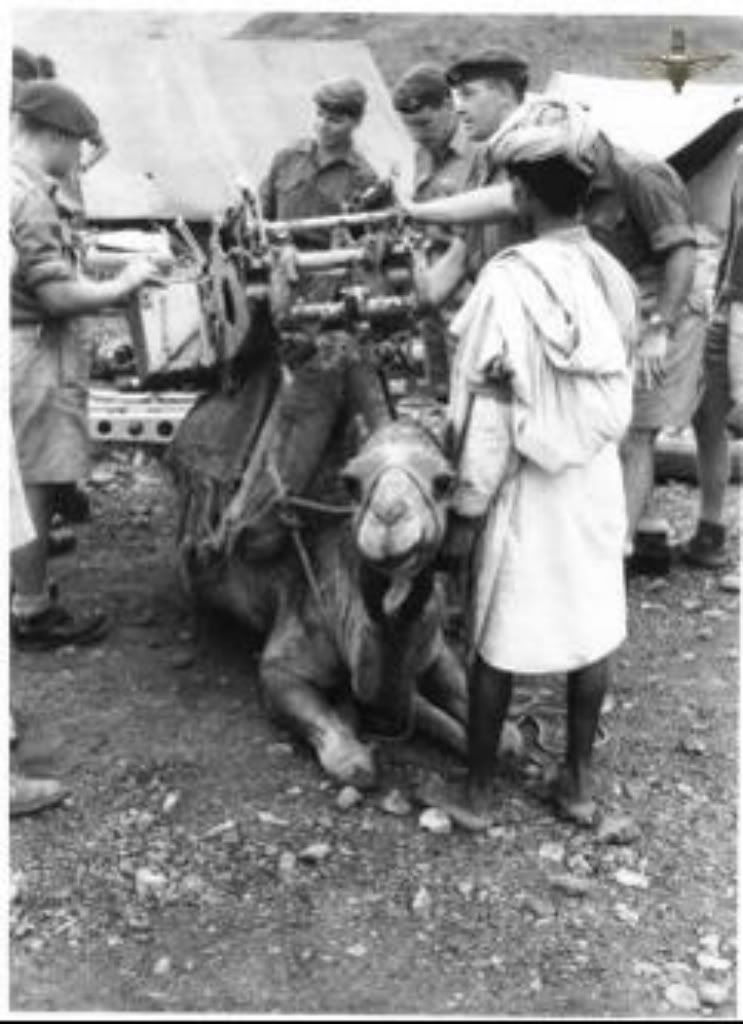You are using an out of date browser. It may not display this or other websites correctly.
You should upgrade or use an alternative browser.
You should upgrade or use an alternative browser.
Dealing with cavalry
03USMC
Active member
The ZULU charge what they call the "The horns of the Buffalo" The loins attack head on while the horns out flank their enemy left and right. Job done, game over. If the Square had been used the horns could never have out flanked and neither could the Zulu bring their full force to bear, they would be tripping over each others feet.
Sorry Brit, but I read that in an Adendorff voice........

BritinBritain
Per Ardua Ad Astra
Sorry Brit, but I read that in an Adendorff voice........

That bugger was an Afrikaner, pity we haven't got sound, I'd do it for you in a cockney accent.
Last edited:
Trooper1854
The Brit Pack
That bugger was an Afrikaner, pity we haven't got sound, I'd do it for you in a cockney accent.

There's alot of evidence to suggest he buggered off before the fighting started!
(Though having survived Isandlwana, you could hardly blame him in a way).
Two quotes from the book " The letters of Private Wheeler 1809-1828"
At the Battle of Waterloo
Brighton
At the Battle of Waterloo
I am at a loss which to admire most, the cool intriped courage of our squares, exposed as they often were to a destructive fire from the French artillery and at the same time or in less than a minute surrounded on all sides by the enemy's heavy cavalry, who would ride up to the very muzzles of our men's firelocks and cut at them in the squares. But this was of no use, not a single square could they brake, but was always put to the rout, by the steady fire of our troops. In one of these charges made by the enemy a great many over charged themselves and could not get back without exposing themselves to the deadly fire of the infantery. Not choosing to return by the way they came they took a circutious rout and came down the road on our left. There were nearly one hundred of them, all cuirassieurs. Down they rode full galop, the trees thrown accros the bridge on our left stopped them. We saw them comming and was prepared, we opened our fire, the work was done in an instant. By the time we had loaded and the smoke had cleared away, one and only one, solitary individual was seen running over the brow in our front. One other was saved by Capt. Jno. Ross from being put to death by some of the Brunswickers.
Brighton
The first anniversary of the battle of Waterloo was ushered in with all due form and solemnity. Major Thwaites was determined all ranks should enjoy themselves, roast beef, plumb pudding. with plenty of brown stout was the order of the day. At 11 o'clock the 10 Huzzars formed on the Steene. At the same time we marched out of the Barrack yard and formed. After firing a feu de joi, the bugle then sounded 'cavalry in sight'. It seemed to be the intention of the two commanding officers to shew to the numerous spectators, the terrible resistance a square of infantery can offer to a body of cavalry. Accordingly as soon as the firing was over our bugles sounded 'cavalry in sight'. In an instant the square was formed and an animating fire as perfect as the roll of a drum was kept up for some time, the bugle then sounded 'cease firing,' when the kneeling ranks, whose fire is always reserved, fired volleys at the retreating cavalry. I was the commanding officers orderly, and being mixed with the spectators, a gentlemen remarked it was one of the most sublime sights he ever saw, the square presented on solid mass of steel and fire.
Found another article:
Daily Quiz for April 15, 2012 (http://www.historynet.com/quiz120415.htm?utm_source=rss&utm_medium=rss&utm_campaign=quiz120415)
Robert the Bruce of Scotland decisively defeated the English at this battle, using a sheltron pike formation.
Bannockburn.
Sheltron refers to a packed formation of troops, sometimes circular, sometimes in straight lines. In the 1314 battle, sheltron of Scottish pikemen confounded the English cavalry. The Scottish supposedly first used the sheltron at the Battle of Falkirk, 1298. These infantry successes against armored cavalry helped launch the so-called infantry revolution of the Late Middle Ages.
Daily Quiz for April 15, 2012 (http://www.historynet.com/quiz120415.htm?utm_source=rss&utm_medium=rss&utm_campaign=quiz120415)
Robert the Bruce of Scotland decisively defeated the English at this battle, using a sheltron pike formation.
Bannockburn.
Sheltron refers to a packed formation of troops, sometimes circular, sometimes in straight lines. In the 1314 battle, sheltron of Scottish pikemen confounded the English cavalry. The Scottish supposedly first used the sheltron at the Battle of Falkirk, 1298. These infantry successes against armored cavalry helped launch the so-called infantry revolution of the Late Middle Ages.

